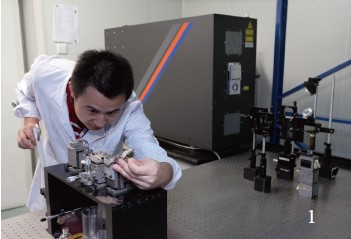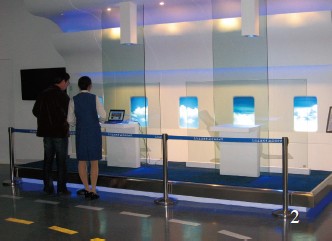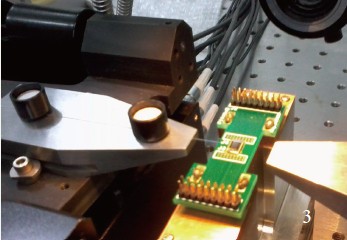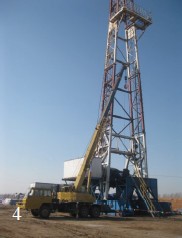The Optoelectronic System Laboratory, relying on the research capability of the Institute of Semicondutors about optoelectronic devices, and aiming at meeting China's needs and promoting the development of the domestic photoelectronic industry, is engaged in research concerning optoelectronic systems and related technologies.
The laboratory has world-class instruments, providing excellent conditions for scientific research and training. The laboratory is currently funded by about 20 national and academic projects, including the National High Technology Research and Development Program of China (“863”), the National Natural Science Foundation of China, and key programs of the Chinese Academy of Sciences. It has also undertaken a number of national basic projects and cooperative projects with enterprises. It is one of the significant characteristics of the laboratory to closely combine scientific research and social requivements. In recent years, many research achievements have been put into practice and evaluated positively by users, such as oil and gas exploration, earthquake monitoring, ocean observation, laser night vision, semiconductor lighting and commiunication.
Research Direction
Optical fiber sensing technology: The laboratory focuses on research about fiber grating and laser sensing technology, and has developed various optical fiber sensor systems, including fiber gratings, fiber lasers, underwater hydrophone systems, in-well seismic sensor systems, and ocean physical detection systems. It has developed applications of the leading fiber sensing technology for such practical projects as oil and gas exploration, earthquake monitoring, ocean observation, and promoting the technology of fiber sensors.
Laser detection and imaging: The major research areas include active night vision, underwater imaging and fluorescence lifetime imaging microscopy based on gate viewing. The research points are a nanosecond pulsed laser illuminator, a sub-nanosecond time synchronization generator and acquisition of target information (e.g. position, size, time evolution) by image processing.
Laser radar technology: The major research areas include active laser detecting, precision laser ranging and high-resolution 3D imaging, laser tracking and laser guidance. The research focuses on integration of laser technology, weak signal detection technology, high-precision photoelectric measurement technology and highprecision 3D imaging technology. It has developed practical applications including obstacle detection, obstacleavoidance and navigation, topographic mapping and resource exploration.
Wireless optical communication: It has conducted research about wireless optical communication system integration and application, particularly LED-lighting-based wireless optical communication systems.
Semiconductor laser display: Investigation of on the next generation of display techniques which use semiconductor lasers as illuminators. The work mainly focuses on the research and development of optical source modules, key devices and system integration.
Research Equipment
Major scientific research equipment includes: a Fiber Grating Writing System, a Underwater-sound Sensor Test System, a Semiconductor Illumination Communication System, a Range-Gated Laser Night Vision System, and an Optical Characterization System for on-chip photonic devices and systems.

1 Fiber Grating Read-in system

2 The Semiconductor Illumination Communications System is displayed in the Shanghai World Expo

3 Optical Characterization System for on-chip photonic devices and systems

4 Field experiment of the fiber-optical in-well seismic sensor system

5 Underwater-sound Sensor Test System
